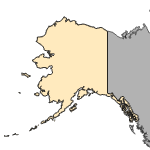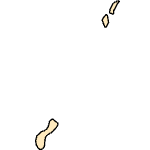Corydoras aeneus
(green corydoras)
Fishes
Exotic |
|
Common name: green corydoras
Taxonomy: available through
www.itis.gov
Identification: Nijssen and Isbrücker (1980) treated C. aeneus as a valid species, but also recognized a C. aeneus species complex with 25 species. The key in Gosline (1940) is useful but somewhat dated. A key to a limited number of species, including distinguishing characteristics for C. aeneus, was given by Taphorn (1989). A few distinguishing characteristics and photographs appeared in Burgess (1992). Color photographs also appeared in Burgess (1989), although it is uncertain whether these represent the true C. aeneus.
Size: In aquaria, to about 7.5 cm; in nature, rarely exceeds 4 cm SL.
Native Range: Tropical America. Widespread in South America including, but not limited to, Trinidad (type locality), and the Amazon and Orinoco basins; from Venezuela and the Guianas in the north to São Paulo and Mato Grosso, Brazil, in the south (Nijssen and Isbrücker 1980).



|

Alaska |

Hawaii |

Puerto Rico &
Virgin Islands |

Guam Saipan |
Hydrologic Unit Codes (HUCs) Explained
Interactive maps: Point Distribution Maps
Nonindigenous Occurrences:
Table 1. States with nonindigenous occurrences, the earliest and latest observations in each state, and the tally and names of HUCs with observations†. Names and dates are hyperlinked to their relevant specimen records. The list of references for all nonindigenous occurrences of Corydoras aeneus are found here.
Table last updated 12/19/2025
† Populations may not be currently present.
Means of Introduction: Probable aquarium release or escape (Mundy 2005).
Status: Established on Oahu and Kauai, Hawaii (Devick 1991a, 1991b; Mundy 2005).
Impact of Introduction: The impacts of this species are currently unknown, as no studies have been done to determine how it has affected ecosystems in the invaded range. The absence of data does not equate to lack of effects. It does, however, mean that research is required to evaluate effects before conclusions can be made.
References: (click for full references)
Burgess, W.E. 1989. An atlas of freshwater and marine catfishes: a preliminary survey of the Siluriformes. Tropical Fish Hobbyist Publications, Inc., Neptune City, NJ.
Burgess, W.E. 1992. Colored atlas of miniature catfish: every species of Corydoras, Brochis, and Aspidoras. Tropical Fish Hobbyist Publications, Inc., Neptune City, NJ.
Devick, W.S. 1991a. Disturbances and fluctuations in the Wahiawa Reservoir ecosystem. Project F-14-R-15, Job 4, Study I. Division of Aquatic Resources, Hawaii Department of Land and Natural Resources. 21 pp.
Devick, W.S. 1991b. Patterns of introductions of aquatic organisms to Hawaiian freshwater habitats. 189-213 in New directions in research, management and conservation of Hawaiian freshwater stream ecosystems. Proceedings of the 1990 symposium on freshwater stream biology and fisheries management, Division of Aquatic Resources, Hawaii Department of Land and Natural Resources.
Gosline, W.A. 1940. Revision of the neotropical catfishes of the family Callichthyidae. Stanford Ichthyological Bulletin 2(1):1-29.
Mundy, B.C. 2005. Checklist of the Fishes of the Hawaiian Archipelago Bishop Museum Bulletins in Zoology 6. 704 pp.
Nijssen, H., and I.J.H. Isbrücker. 1980. A review of the genus Corydoras Lacépède, 1803 (Pisces, Siluriformes, Callichthyidae). Bijdragen tot de Dierkunde 50(1):190-220.
Taphorn, D.C. 1989. Los peces de la familia Callichthyidae de la cuence del Río Apure. BioLlania (Guanare, Venezuela) 6:15-50.
Yamamoto, M. - Biologist, Division of Aquatic Resources, Hawaii Department of Land and Natural Resources, Honolulu, HI.
FishBase Summary
Author:
Leo Nico, and Pam Schofield
Revision Date: 2/2/2012
Peer Review Date: 2/2/2012
Citation Information:
Leo Nico, and Pam Schofield, 2025, Corydoras aeneus (Gill, 1858): U.S. Geological Survey, Nonindigenous Aquatic Species Database, Gainesville, FL, https://nas.er.usgs.gov/queries/FactSheet.aspx?speciesID=336, Revision Date: 2/2/2012, Peer Review Date: 2/2/2012, Access Date: 12/20/2025
This information is preliminary or provisional and is subject to revision. It is being provided to meet the need for timely best science. The information has not received final approval by the U.S. Geological Survey (USGS) and is provided on the condition that neither the USGS nor the U.S. Government shall be held liable for any damages resulting from the authorized or unauthorized use of the information.